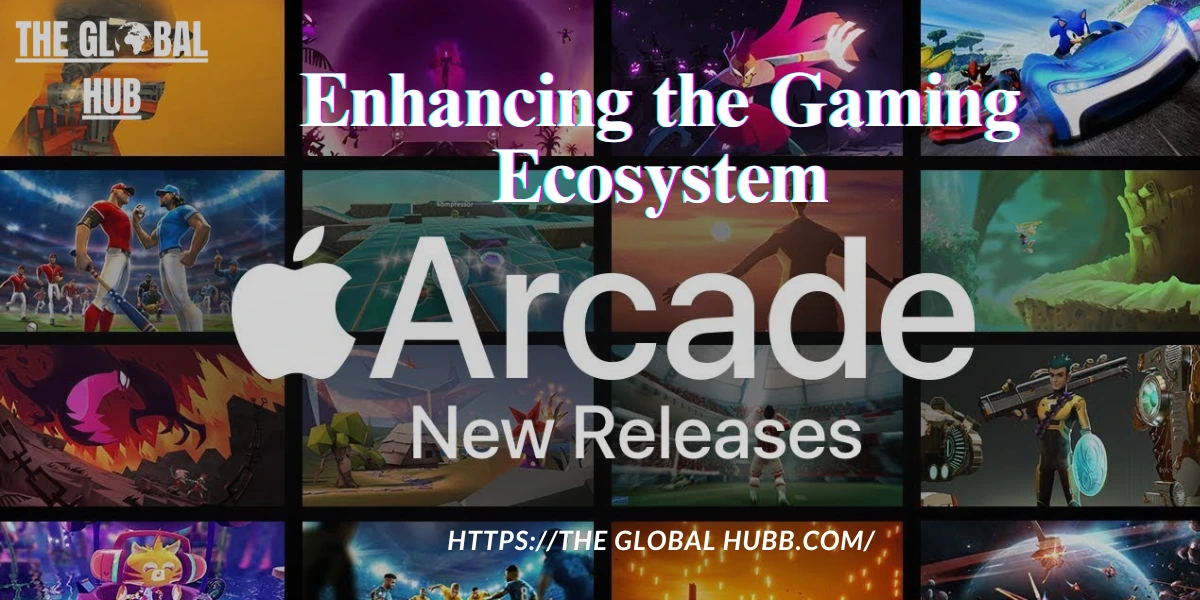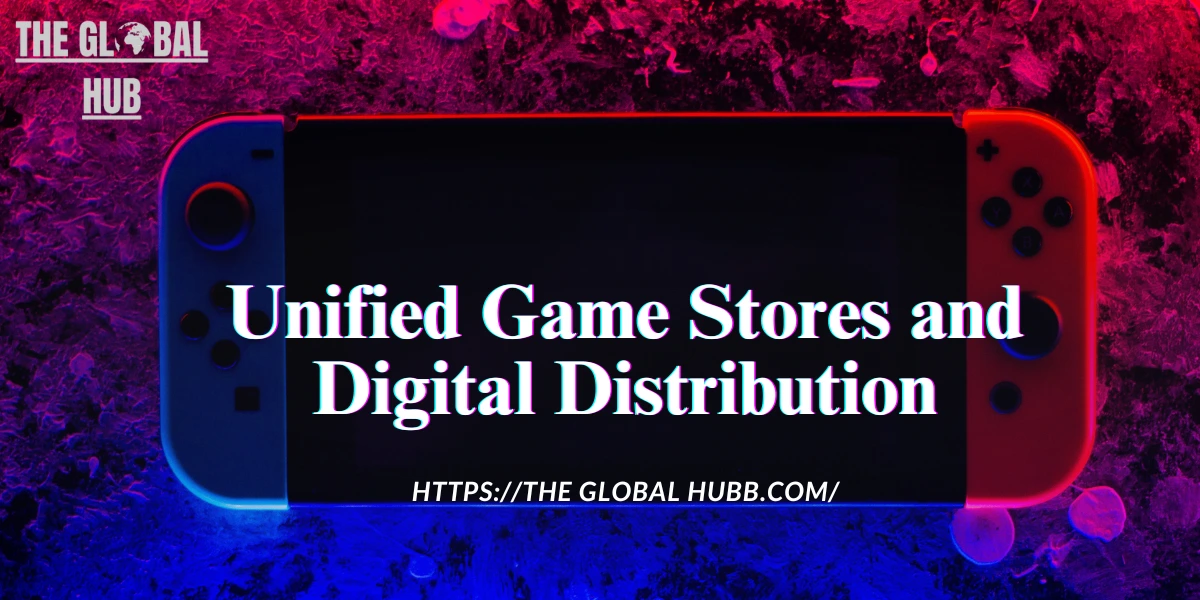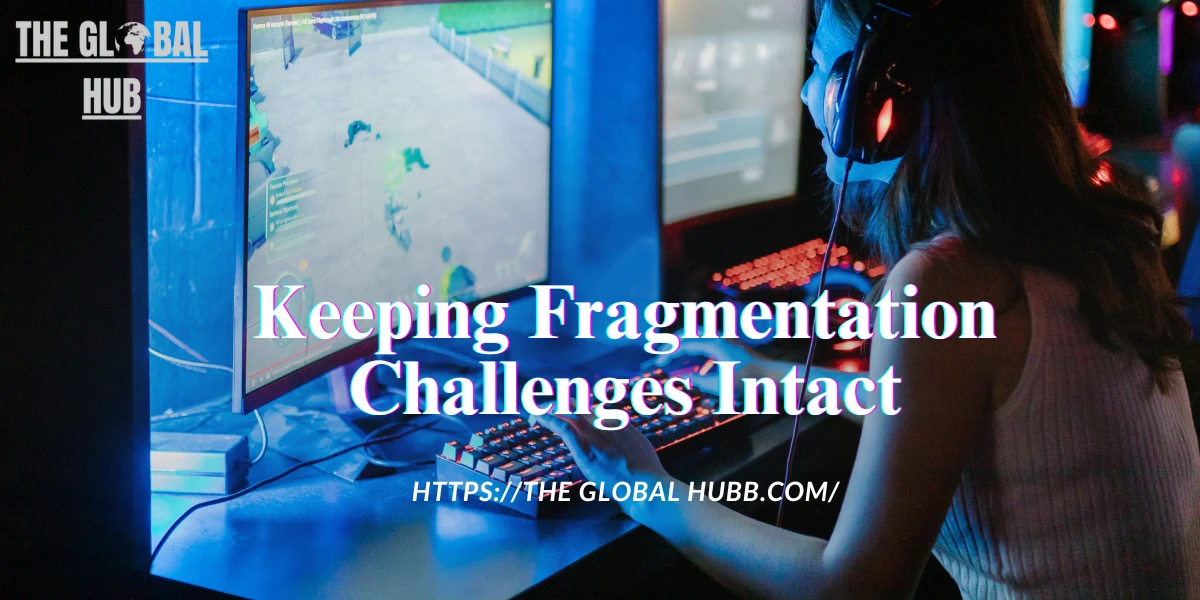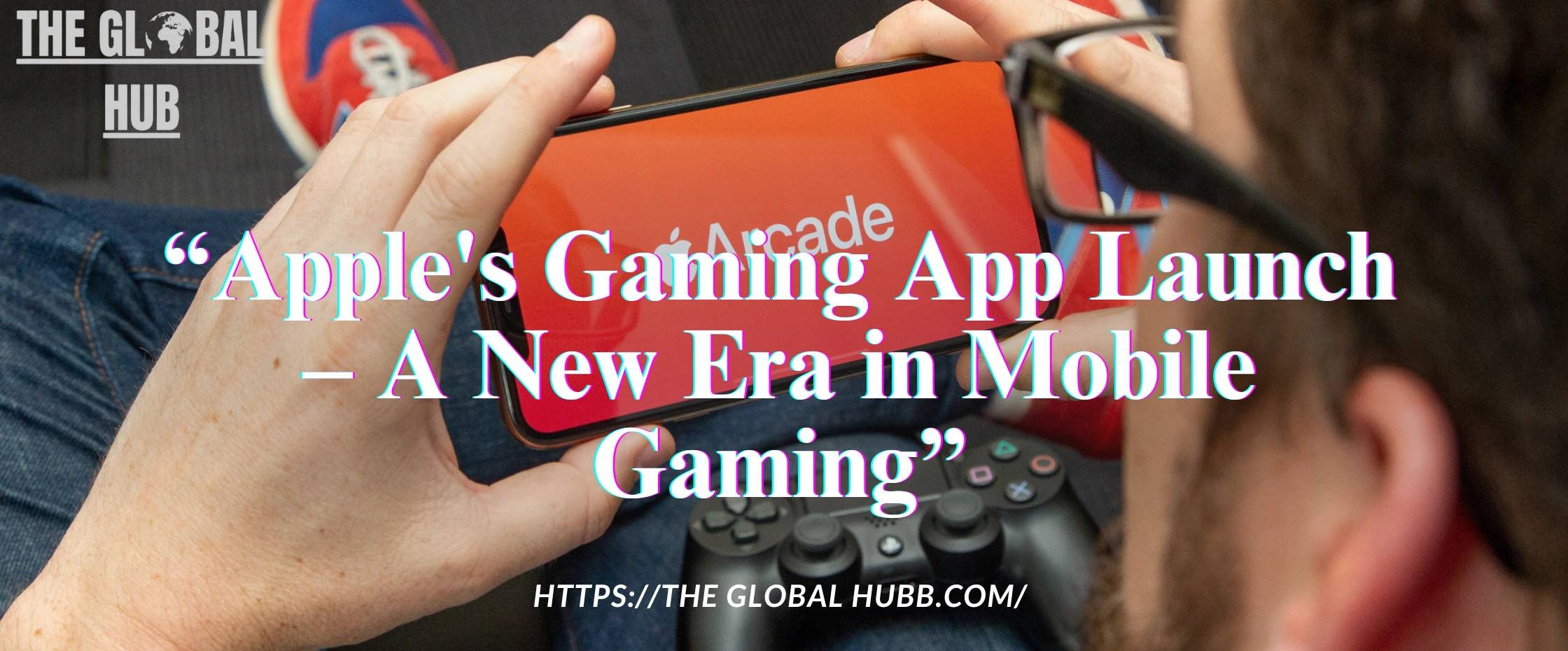Apple’s Gaming App Launch – A New Era in Mobile Gaming
Table of Contents
ToggleWith the creation of a dedicated gaming app, Apple seems ready to implement a steep rise in the mobile gaming industry. The app is scheduled for announcement at the upcoming Worldwide Developers Conference (WWDC) along with the new iOS 19 in September 2025.
Apple’s Pro Gaming App: The Change Mobile Gaming Needs

Based on the leaks from the WWDC conference, it has been said that the new app will put together all gaming activities within Apple’s ecosystem into one service. This includes the Apple TV, iPad, Mac, and smartphone, which will be fully integrated into the ecosystem allowing users to access everything via a single account.
The app aims to assist further mobilization of game consoles and aims to take the place of the existing Game Center, replacing it with a simpler and more visually appealing user interface. Some core capabilities include:
- Game Launching:
Game launching refers to the process of releasing a video game to the public, typically after months or even years of development. It’s a critical moment in a game’s lifecycle because it determines how well the game will be received by the audience and how successful it will be in the long run. Successful game launching requires not just a polished game, but also effective marketing, a solid release strategy, and careful post-launch support.
Initiating revolution in gaming through the ease of launching multiple games through a single platform. Integration and unification at its finest.
- Achievements and Leaderboards:
Compete against friends and gamers across the globe, tracking progress has never been better. - Social Features:
Following and sharing gaming moments add another layer of fun for friends. - Editorial Content:
Provides recommendations, news, and reviews about different games furthering the idea for improved integration. - Incorporation de Apple Arcade:
Launched in September 2019, Apple Arcade symbolizes Apple’s foray into the subscription gaming market by providing users access to a wide array of premium games across its ecosystem. With the addition of Apple Arcade to its growing list of services, Apple has integrated a distinct mobile gaming platform into its ecosystem, not just aiming to shift the dynamics of mobile gaming, but revolutionizing the entire ecosystem, yielding advantages for the players and developers alike. Subscribers of Apple Arcade can play a select number of games that are exclusive and free of ads on ad-supported platforms and are accessible on iPhones, iPads, Macs, and Apple TVs, solidifying Apple’s strategy towards gaming and entertainment.
Exclusive Access to Apple Arcade and Its Latest Additions.
Apple is striving to make this initiative its most important lever in video games: Developing a console-like experience on mobile. This app has also been supported by Apple’s recent acquisition of RAC7, the studio behind the popular game Sneaky Sasquatch.RAC7 will continue to operate independently within Apple, but under the company’s control, thus influencing exclusivity in the new space.
Enhancing the Gaming Ecosystem

The enrichment of this gaming app on Apple devices is about to enhance the console gaming ecosystem. By integrating multiple gaming services under a single app, Apple hopes to:
Steady Growth In User Friendliness:
User-friendliness insightfully highlights how clear, simple, and accessible a system, software, website, or product is for its users to navigate and operate. In relation to technology, user-friendliness stands as one of the most, if not the most, powerful determinants of user engagement, retention, and recommendation. There has been a marked increase in user friendliness throughout various sectors in the past few years as businesses and developers understand the value of ease and intuition within their offerings.
This sustained improvement stems from ongoing changes in technology, user experience (UX) design, and the heightened focus on customer satisfaction. Prioritizing user-friendliness enables businesses to enhance accessibility and drive customer adoption and loyalty. We will analyze what drives this growth and its significance in today’s business and technology ecosystem.
Fragmentation Reduction and the Ease of Access to Game Features and Functionality

Reducing access fragmentation is a recent concept emerging to combat the issue of “access fragmentation,” which occurs when access to gaming experiences is divided by distribution platforms, business models, operating systems, devices, and sub-genres. Reduction of fragmentation in gaming context refers to making gaming easier by enhancing access to games and their features, eliminating barriers in the form of inconsistent experiences, gaming communities, or even obstructions in accessing devices.
Improved access as an example of reduction of fragmentation speaks to the effort made by developers, platforms, and service providers to allow users to seamlessly play the game across devices and realize they are part of a much bigger community without necessarily being hindered by features or platform limitations. There certainly exists lesser access barriers for both casual and hardcore gamers. Below, you may find the impact on the gaming industry as a whole and the barrier-free experience provided.
What is Fragmentation in Gaming?
Fragmentation in gaming occurs when players are restricted by their gaming platform, device, or operating system. This issue can appear in multiple ways:
- Platform-Specific Games: Certain games are restricted to certain consoles (e.g., PlayStation exclusives or Xbox exclusives) or devices (mobile games vs PC games).
- Cross-Platform Compatibility: Games that are not allowing cross-platform play so users on different devices cannot interact with each other.
- Diverse Game Versions: A game can have multiple versions on different platforms which contribute to lack of uniformity in features, gameplay, and performance.
- Inconsistent Access to Features: Some platforms or devices do not support certain functionalities such as high-definition graphics, virtual reality (VR), or cloud saves.
How Less Fragmentation Improves Access to Games and Features
Fragmented systems create barriers for features and functionalities and less fragmentation helps elimination of barriers. This provides a better experience along with improving access for everyone. Let’s explain how lower fragmentation provides better access:
Cross-Platform Play (Cross-Play)
Implementation of cross-platform play or cross-play, as players from different devices such as PlayStation, Xbox, PC, and mobile can play together in the same gaming environment, is the most noticeable step towards reduction in fragmentation.
- Enhanced Integration for Diverse Communities:
With cross-play features, gamers are unified regardless of which console or device they own. Friends can now enjoy games together without restrictions. This is crucial in multiplayer modes of games such as Minecraft, Fortnite, and Call of Duty, where a thriving community is essential for longevity. - Consolidated Multiplayer Base Per Game:
Game developers can access vast pools of players, significantly reducing match waiting times and enhancing the online experience cross-play. It promotes a healthier multiplayer community. - Increased Durability:
Games that support cross-play are likely to last longer, as the player base is spread across multiple platforms without losing interest because the game is popular across all.
Cloud Saves
Services like Google Stadia, NVIDIA GeForce Now, and Xbox Cloud Gaming (formerly xCloud) have introduced cloud gaming and paired it with saves, which have targeted regions of fragmentation and enhanced accessibility.
- Access Games Across Different Devices:
Users are not bound by the need for powerful hardware with cloud gaming as high-performance games can be played and streamed on various devices such as smartphones, tablets, and low-end PCs.
Gamers can make use of any device they wish to access a particular game since there is no need to acquire different consoles or gaming PCs.
- Consistent Game Progress:
Players can start playing a game on a console and easily switch to a mobile or PC device during the course of the game without worrying about losing their progress because they have cloud saves which ensures progress is stored online.
Device-dependent save files can cause fragmentation which is something this experience addresses seamlessly.
Unified Game Stores and Digital Distribution

The fragmentation related to purchasing and distributing games has been alleviated by platforms like Steam, the Epic Games Store, and Apple Arcade as they have adopted digital distribution.
- One-Stop Shop:
The purchasing of games has become easier for users as they no longer have to track their devices and platforms since digital stores enable a single area for users to view all the games they own on different systems. For instance, all games acquired on Steam are accessible through any PC that has the Steam client, which streamlines the process for players. - Cross-Buy and Cross-Save Functions:
Most platforms provide cross-buy (one payment gives access to a game on multiple devices) and cross-save, meaning players can purchase a game on one platform and access it on another without losing progress or features.
Mobile Gaming Evolution

Historically, mobile gaming has been one of the most fragmented sectors due to device-specific restrictions and reservations within app stores. Nevertheless, changes over the past few years have helped overcome these barriers:
- App Store Availability:
Apple Arcade and Google Play Pass serve as gatekeepers, providing curated premium game access through subscriptions, which will greatly enhance gaming quality on iPhones, iPads, and Android devices. - Universal Game Engines:
Unity and Unreal Engine enable the creation of console, PC, and mobile games, as well as their operating systems for several devices. Consequently, developers can launch a single title on multiple platforms without significant differences in content or gameplay experience. - Cloud-Based Mobile Gaming:
With the use of cloud services such as Xbox Cloud Gaming, mobile gaming enables players to stream games to their smartphones and tablets, eliminating the need for actual mobile hardware to run game software. This enables users to experience console-level gaming on their smartphones.
Open Standards and Platforms

The adoption of open standards and open frameworks has decreased fragmentation and increased the reach of games to a larger audience.
- Open APIs and Other Specialized Game Development Tools:
Open standards and cross-platform APIs ease the developers’ effort in providing multiple device support with a single game. OpenGL, Vulkan, and other newer technologies are improving the development and rendering of games across different devices with less work needed to port the game between platforms. - Cross-Platform Interoperability:
Drastic shifts towards cross-platform operability have been adopted into their ecosystems by companies like Microsoft and Sony. For instance, the Xbox Live services are reachable from Windows PCs and mobile phones, and PlayStation has features that allow users to access PlayStation services over mobile applications and personal computers, thus promoting more integration between different operating systems.
Advantages of Decreased Fragmentation

Benefits of reduced fragmentation go beyond games players. Developers and platform owners also stand to gain greatly from it.
- Enhanced Player Accessibility:
Players are able to access and use different devices and platforms for gaming without worrying about hardware limitations or platform exclusivity. - Enhanced Player Communities:
Fragmentation within the gaming community is caused by cross-play and cloud services. In multiplayer and online games that greatly depend on the size of the player base, the existence of fragmentation leads to a lack of “real” communities. The ability to connect with users from other parts of the world gives rise to larger and more active communities which combats the isolation caused by fragmentation. - Reduced Isolation:
Having a broad community enhances interaction within a game. Additionally, with the existence of a unified ecosystem, the availability of different types of games leads to an increase in life cycles which helps to further reduce isolation. - Higher Sales:
Businesses have a greater audience base that is accessible to them with the unification of consoles. Their accounts available can be integrated with cross-buy, cloud saves, kite drives and other mechanisms which better serve the user economy. These features help developers cater to a wider demography which in turn raises sales. - Reduced Expenses for Players:
Players no longer need to spend a fortune on expensive peripheral equipment to access the latest games due to cloud gaming and subscription services. This increases accessibility by lowering the cost of entry.
Keeping Fragmentation Challenges Intact

Despite the advancements made, there are still unsolved issues pertaining to fragmentation:
- Exclusives and Content Pertaining to Platforms:
Certain platforms continue to have exclusive titles that other systems do not support. This helps in strengthening the brand identity of the platforms, but at the same time, makes it difficult for these users to access most of the required games without multiple consoles. - Technical and Performance Limitations:
A significant number of units do not support cross-play or cloud gaming, especially older ones or those with low specifications. Those maintaining a smooth experience across all units must ensure up-to-date optimization. - Diverse Business Models:
The combination of free-to-play, subscription services, and pay-per-download models still has the potential to fragment the gaming experience. Merging these with a single ecosystem of unified structure remains a great task.
Looking Ahead

The company’s marketing strategies indicate its intention to compete as a serious player in the gaming market with the forthcoming Apple Gaming App. Followers of the WWDC event will have more information regarding the app’s features and functionality. Users can look forward to an upgraded gaming experience with the fully integrated Apple Gaming App posterior to the iOS update in September.
The announcement is expected to take place on the Apple website; updates will follow leading into WWDC 2025.
Mark your calendars for WWDC 2025 to catch a glimpse of Apple’s foray into dedicated mobile gaming, whereThe Times of India reports innovation will change the landscape of gaming on Apple devices.

